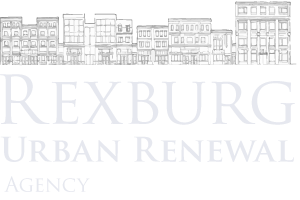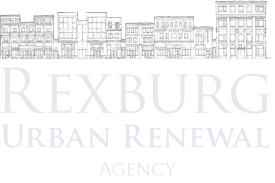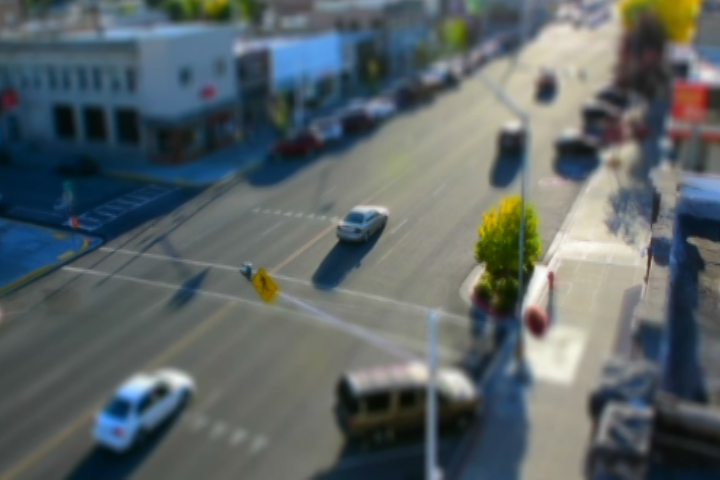About
The City of Rexburg began to explore the use of tax increment financing as an economic development tool in 1990 and on November 6, 1991 the Rexburg Urban Renewal Agency (also known as the Rexburg Redevelopment Agency) was formed. The Rexburg URA is composed of a seven member commission that oversees and coordinates redevelopment efforts in Rexburg. They have engaged in strategic planning in coordination with the City Council and have implemented urban renewal projects to help develop and improve the City of Rexburg.
Objectives
- The strengthening of the tax base by encouraging private development and thus increasing the assessed valuation of properties within the Revenue Allocation Area and benefiting the various taxing districts.
- The assembly of land into parcels suitable for modern, integrated development with pedestrian and vehicular traffic.
- The elimination of environmental deficiencies in the project areas.
Urban renewal and tax increment financing are the most significant tools available to Idaho communities for encouraging development of deteriorating and underutilized areas, attracting and retaining businesses, generating economic development, and promoting job creation.
Current Requests for Proposals
Recent Projects
Fire Station Renovation
Construction began in Fall 2014 and was completed at the end of Summer 2015. The remodeling consisted of adding a second [...]
2nd West & 1st North Corner
Street construction on the corner of 2nd West and 1st North, past BMC West and Steiner’s grain elevators, made a [...]
1st East & 2nd North Reconstruction
1st East was reconstructed from 2nd North and up. 2nd North was also reconstructed from 1st East to 2nd East. This [...]
Moving of Power Transmission Lines
The Rexburg URA funded the moving the power transmission lines to facilitate the private investment in McDonalds and other future [...]
FAQ
The Agency works to stimulate economic/commercial development under three primary goals:
- The strengthening of the tax base by encouraging private development and thus increasing the assessed valuation of properties within the Revenue Allocation Area and benefiting the various taxing districts.
- The assembly of land into parcels suitable for modern, integrated development with pedestrian and vehicular traffic.
- The elimination of environmental deficiencies in the project areas.
These efforts are carried out within several “urban renewal districts” across Rexburg.
When a redevelopment project is being planned, the Urban Renewal Authority or Board analyzes how much additional property and/or sales taxes may be generated once it is completed. That “tax increment” then can be used by the urban renewal entity either to finance the issuance of bonds or to reimburse developers for a portion of their project costs.
In either case, the new tax revenue that is created must be used for improvements that have a public benefit and that support the redevelopment effort, such as site clearance, streets, utilities, parks, the removal of hazardous materials or conditions, or site acquisition.
How it works
At the time an urban renewal district is formed, the County Assessor establishes the current value for each property in that district. This value is referred to as the “base” value. All property taxes on the “base value” continue to flow to the taxing districts within the urban renewal district, such as the county, the city, the highway district, etc. Over time, the assessed value of the properties in the urban renewal district will generally increase. That increase in value is referred to as “incremental value.” The property taxes generated by the incremental value above the base value go to the urban renewal agency to be reinvested in the specific urban renewal district.
For instance, if the district is approved in 2010, the assessed value of a property in 2010 becomes the “base value” and all property taxes on that value continue to flow to the usual taxing districts. If the property increases in value after the 2010 base year, the property taxes on the incremental value is distributed to the Agency.
An example would be: if a property was assessed by the County Assessor as having a value of $100,000 in 2010, the property taxes on that amount would all go to the usual taxing entities since that is the “base year value”. Then, if the property value increased to $110,000 in 2011, the taxes on the “base value” of $100,000 would still go to the usual taxing entities and the taxes on the “incremental” $10,000 would go to the Agency.
If the urban renewal district did not exist, taxes on the entire $110,000 value would go to the usual taxing entities so the total tax bill to the property owners remains the same.
History:
Beginning in the 1960s federal funds were the initial source of money for urban renewal projects in Idaho. As these funds were phased out in the 1970s, an alternative financing method was needed. In 1988, the Idaho state legislature adopted the Local Economic Development Act which authorized the use of tax increment financing. Under the Idaho Economic Development Act, urban renewal agencies now receive the majority of their funding from revenue allocation, otherwise known as “Tax Increment Revenue,” and, in some cases, bonds or other long-term debt secured by the Tax Increment Revenue.
- Job creation from the initial project as well as potential for “spinoff ” developments.
- Underutilized and deteriorated or deteriorating property is returned to productive use.
- Infrastructure upgrades enhance capacity for surrounding area and community at large.
- Improvements to local transportation systems benefit the community at large.
- Increasing local tax base may mean property owners enjoy lower levy rates in the future.
- Successful projects generate increased sales and income taxes for the state.






